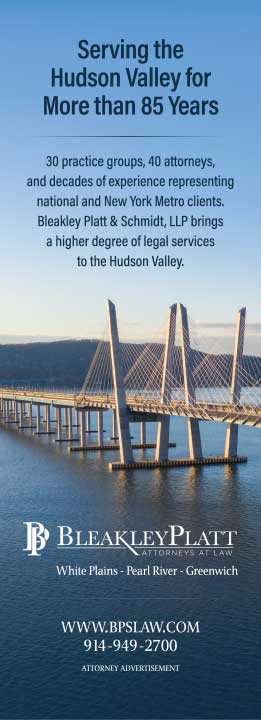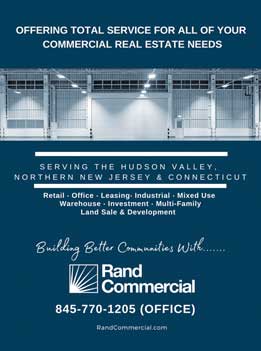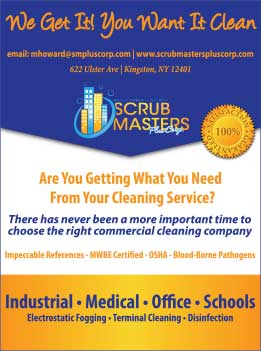BRE PETTIS BANTAM TOOLS | WITH HV MFG STAFF
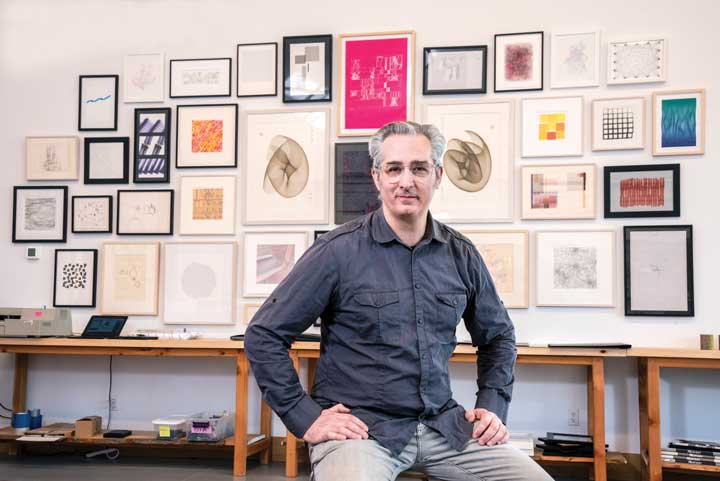
EMPOWERING PEOPLE TO DO GREAT THINGS.
On a bright, cold January morning, HV Mfg visited Bantam Tools in Peekskill, Westchester County, to meet Bre Pettis. Sitting in his office, surrounded by a world class collection of computer art and with an expansive view of the Hudson River, HV Mfg had a wide-ranging conversation with the Bantam Tools President and CEO (and also the co-founder of MakerBot, the company that made 3D printing technology accessible to millions). Among the many topics we covered were Bantam Tools, innovation, education, the beauty of the Hudson Valley, and the future of manufacturing.
HV Mfg: Thank you for agreeing to sit down with us. Let’s start with Bantam Tools – can you tell us about the company, what do you make and who are your customers?
BP: It is my pleasure and I appreciate the opportunity to share what we do here with your readers. I also think it’s important to get the word out about manufacturing and appreciate what you are doing with this publication.
Bantam manufactures desktop CNC machines for ‘World Changers and Skill Builders.’ The machines are about the size of a copier paper box and range in price from $4,000 to $6,500 so they are small and accessible. Our best customers are engineers looking for a tool that can help them prototype design changes quickly. Instead of sending a drawing out to a third party they can produce it themselves – literally on their desk, see if it works and make any modifications themselves. A version of our machine fits in a pelican case so they are portable and easy to use in diverse locations. Our first machines are, for example, now on U.S. Navy submarines where they are used for training and repairs.
Colleges – 2 and 4 year – are buying them for students to use in their design projects. I think it’s important for engineers and technicians to have hands on experience – actually seeing the metal being cut. It gives them a greater understanding and also serves to inspire them to try new things and pursue different ideas. We would also like to see more of the machines in high schools.
One of the things we are trying to do here at Bantam is provide those innovators – those ‘world changers’ as we like to call them – a low cost, low risk method to make something new.
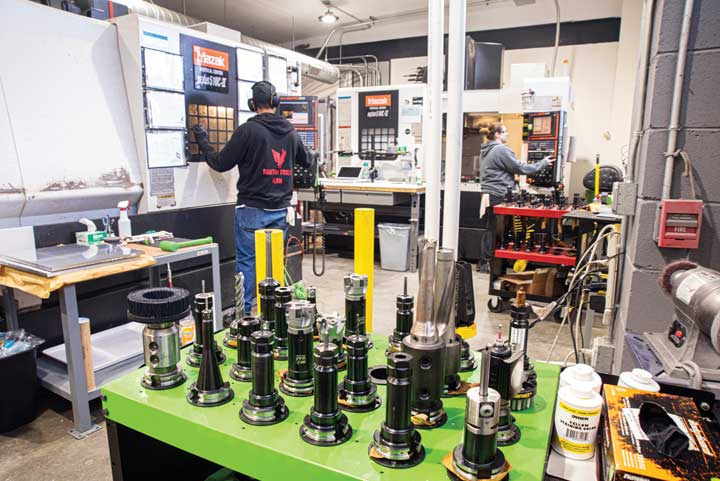
HV Mfg: How did you come to own the company?
BP: It’s a very, very long story – the short version is that in 2017 I bought a company called Other Machine Company which was founded by Danielle Applestone in 2013. They made a simpler version of what we are making now – a desktop milling machine.
I think you know that I was one of the founders of MakerBot, the 3D printing company. That company was sold to another 3D printing company, Stratasys, in 2013 and I left that business in 2016. I was looking for something new to dive into. I was acquainted with Danielle through the “maker community” and knew she was looking to sell. I bought Other Machine Company in May of 2017, renamed the company Bantam Tools and relocated it to Peekskill in November of 2019.
HV Mfg: The whole MakerBot story is fascinating but probably an article for another day or publication. Tell us your path to founding that company and owning Bantam. Is it safe to say yours is a non-traditional path?
BP: Yes, that is probably very safe to say. When I was young, my family moved from Ithaca, New York to Seattle, Washington. I went to Bellevue High School and studied psychology and performing arts at Evergreen State College. Evergreen is pretty non-traditional and there are a lot of interdisciplinary activities. When I graduated in 1995 I did some traveling and took a job in the film industry in Prague. Assistant cameraman and floor runner, I did whatever needed to be done, learning a lot along the way.
After that I moved to London and got a job with Jim Henson’s Creature shop doing similar work – but also working with the puppets. In London I learned to work with my hands. I made all kinds of things from scratch and started making prototypes. The creature shop at that time was tasked with developing rubber gorilla technology so I learned a lot about fabrication in general and animatronics specifically.
But, that wasn’t exactly what I wanted to be doing so I moved back to the U.S. in 1998 and decided to get into education. I got a teaching certificate from Pacific Oaks College and took a job as a Middle School Art teacher in Seattle.
HV Mfg: HV Mfg knows a few Middle School Art Teachers – they earn their pay.
BP: They certainly do – it is challenging work. 12- and 13-year-olds can be a lot to handle. But, the job is very important. It is a very formative age and encouraging creativity and helping them exercise their minds in a different way is critical if they are going to grow up to be the type of adults we can employ and who will be good citizens. I believe strongly that rather than try and form students into what society needs, we need to encourage them to discover who they are and start there.
As important as teaching was, and is, I realized it wasn’t exactly for me. Actually, let me just say that that is a recurring theme in my career. You really could say that I’ve spent the better part of 47 years figuring out what I didn’t want to do.
I moved to Brooklyn in 2006 and got back into prototyping and putting things together. I realized there were plenty of like-minded people who were making different things and doing it in different ways. A group of us would get together regularly to share ideas and work a little on each other’s projects. Before long we had a space and a name: “NYC Resistor.”
I think it is important for people to be able to grow in their roles. To offer a path forward. We have, for example, an apprentice program to develop CNC machinists.

HV Mfg: Is that where MakerBot was born?
BP: Yes. Being in prototyping we were very interested in 3D Printing – the technology had been around for quite some time but it was pretty inaccessible to small businesses and hobbyists. The machines that were available were very expensive and large. My partners and I realized we could make a machine that worked really well, could fit on a tabletop and be easy to operate. We also could make it for a fraction of what the big companies were charging. And MakerBot was born.
That was in 2009. And, as I mentioned, we sold it to Stratasys in 2013.
HV Mfg: That is an interesting journey! You are obviously a very creative, innovative person. You also have experience as an entrepreneur, and now you are CEO of a small manufacturing business. Talk about where, in your experience, art and creativity meet process and production.
BP: I think they are closely related. I have learned a few things through my career so far. One is that creativity and innovation are themselves – or can be – processes. In my time with Jim Henson and later at NYC Resistor, I was able to do what you might call “low risk inventing.” Basically, I was creating things out of materials that cost next to nothing so if things didn’t turn out as I hoped the downside was minimal. That encouraged a fair amount of risk taking and also a process of elimination to get to the outcome I wanted. Low-cost mistakes are a big part of creating something new.
Artists know that. Good engineers know that too. That’s really one of the things we are trying to do here at Bantam is provide those innovators – those ‘world changers’ as we like to call them – a low cost, low risk method to make something new.
As for process and production, I think the same principle applies. We want our team to constantly be looking for ways to make our tools more efficiently. Ideas that turn out our tools faster with the same or higher quality are encouraged. We just started, for example, using our own machines, the actual ones we make here to fabricate parts to go into new finished tools. We are still working out some kinks but it looks to be an efficiency.
On the business side we realized that, in the process of improving our own products, we have developed a good amount of machining expertise. We have decided to make that expertise – along with some excess capacity in our shop – available as a complimentary line of business and to support the local educational community. That is a business innovation we didn’t expect but are happy to embrace.
HV Mfg: So, STEM or STEAM?
BP: STEAM, of course.
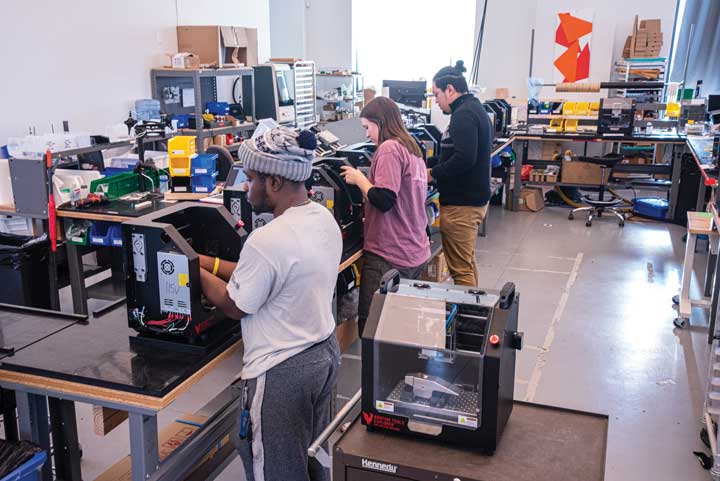
HV Mfg: Let’s shift to workforce development and education. Your breadth of experiences also provides you with a unique perspective on the challenges we face preparing the next generation to work in manufacturing. Share your thoughts on what we can do better, or differently to build a talent pipeline.
BP: I don’t pretend to have all the answers, our education system is complicated and complex. But I do believe this, and it relates to what we were just talking about with innovation and process: everyone is unique and brings with them to the world – and the workplace – their own unique set of talents. I believe that uniqueness or originality is valuable in a workplace. It for sure is here at Bantam. A person’s originality – their unique set of talents is like a product that they bring to a workplace, or a family or community.
If a young person – or a person of any age really – but let’s say young for this conversation, is going to be successful and happy – and add value to their employer we need to help them discover what they are good at and what they like to do.
STEAM, of course!
HV Mfg: We often hear that college isn’t for everyone, that career and technical education is often a better path for young people. What are your thoughts?
BP: I support, endorse, encourage paths and programs that help students discover who they are and what their talents are. That means learning about careers and technologies. It means holding tools in their hands and making things. It means visiting people where they work and experiencing what they do. It means creating with clay or wood or paint or other media. And, it means learning about history, science, civics, and language.
I don’t think it means we should send kids to school with an expected career or college outcome. The process of learning should be a chance for discovery.
I think we need to trust liberal arts education. And, I believe expectative education is wrong and leads to disappointment.
HV Mfg: Is that what you mean when you say your tools are for ‘skill builders,’ that you want to help teachers help students discover more about their talents?
BP: Yes. Our machines – in the right hands – can open up a pretty much limitless world to their users.
HV Mfg: The team here at Bantam certainly is passionate and committed. Can you talk a little bit about your leadership style? How do you inspire that passion, that commitment?
BP: First, I think you have to be doing things that are actually worth doing. I think we have a product and purpose that people can get behind. We are building products that are part of an ecosystem that empower our customers to do great things. Maybe they are working on a sustainable energy product or a piece of equipment that will be used to land on Mars one day. Or, maybe they are raising the skills of the next generation of innovators. Reminding our employees that what they are doing is important is something I think is critical – so I do that regularly.
I also think it is important to have people who are good at what they do. Sometimes they are hired that way but more often than not it requires training and development. Along those lines I think it is important for people to be able to grow in their roles. To offer a path forward. We have, for example, an apprentice program to develop CNC machinists.
I also want people to be comfortable failing and recovering. I want people to be willing to try new ideas to make our products and processes better. Not every idea is a good one and not every good idea works out in the end. But if we are afraid of failure the good ideas that will improve us may never get tried. To encourage that I walk around the operation as much as I can. I want people to know me and know that I am committed to the company’s success and to their individual success as well.
I’m not sure if that qualifies as a ‘style’ or not but it sums up my approach.
HV Mfg: Final question – Why Peekskill? Don’t get us wrong – we love the Hudson Valley and the City of Peekskill, but of all the locations in – literally the world – you could have chosen, why here?
BP: Well, we love the Hudson Valley, and, as exciting as Brooklyn is, I definitely needed to get away to the country regularly. I bought a place in Croton and was coming here on weekends. My daughter and I started frequenting the Peekskill Coffee House and really just fell in love with the city and the people. When Brooklyn rent got too high for manufacturing, and I needed to relocate Bantam Tools, I asked around and was able to find some wonderful industrial space at a very reasonable price. We bought the buildings, did the renovations and here we are.
The City, the County, and the State have all been very supportive and we look forward to growing here. Plus, the view of the river is pretty special and makes coming to the office even more fulfilling.
HV Mfg: Thank you very much for sitting down with us.
BP: Thank you. I enjoyed it.


